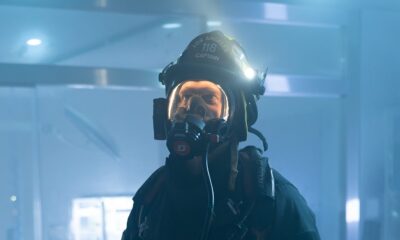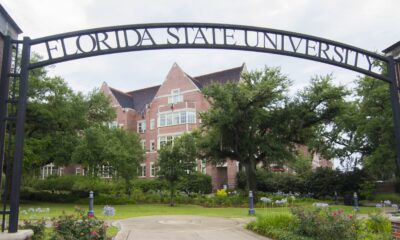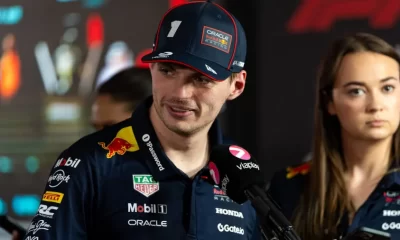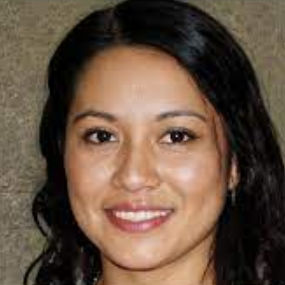Travel
Destination Europe Summit: Balancing tourism growth, regulation and investment
Business and policy leaders gathered at the Destination Europe Summit – a collaborative event organised by the European Travel Commission, Booking.com and Euronews, hosted by Euronews anchor Meabh McMahon.
Guests at the summit discussed the future of the tourism industry – balancing growth, regulation and sustainability investment.
Miguel Sanz, president of the European Travel Commission, took to the stage in Brussels after an introduction from Euronews’ Meabh McMahon – stressing the importance of travel to Europe’s “lifestyle, culture and connectivity”.
He spoke of the effect of digitalisation of the travel sector and argued that more attractions and destinations must be available to book online.
Presenting Europe as “the world’s favourite destination”, Sanz said the region must strive to retain its competitive edge.
Sanz nonetheless highlighted the risks that come with large numbers of visitors:
“Overtourism is putting strain on infrastructure, housing costs, and local communities.”
Tourism investment and strategy for 2026
Apostolos Tzitzikostas, the European commissioner for sustainable transport and tourism, reasserted the importance of tourism for Europe, calling it a “powerhouse for economic growth, for job creation, for social development”.
He outlined the EU’s new tourism strategy for 2026, which will include a focus on:
• Climate adaptation and sustainability funding
• SME digital transformation, including AI adoption
• Infrastructure investment and visitor management
He emphasised that small and medium-sized enterprises (SMEs)—which form the backbone of Europe’s tourism sector—must know how to access funding opportunities to remain competitive. Moreover, he noted how the European Commission has pledged to simplify financing programs.
“We need to make things simpler, and we will,” he stated.
Booking.com CEO warns of overregulation hindering competitiveness
Glenn Fogel, CEO of Booking.com, raised concerns about regulatory hurdles slowing down Europe’s competitiveness.
Fogel also addressed overtourism, suggesting that some destinations may need to explore pricing mechanisms to control visitor numbers, but he stressed that governments—not private companies—should lead on this issue.
“As economies grow, overtourism is only going to get worse,” he warned, highlighting destinations such as Paris, Amsterdam and Venice.
New business models and revenue strategies
A panel featuring industry executives and policymakers explored alternative revenue models for tourism management:
Nikolina Brnjac, member of the European Parliament, highlighted the need for better destination management plans, citing housing shortages and infrastructure pressures from short-term rentals. She highlighted how Croatia has introduced a tourism tax on day visitors to ease congestion.
Daniel Attard, member of the European Parliament, stressed that local communities must be part of tourism decision-making, as not every region welcomes mass tourism.
Magda Kopczynska, EU Commission director general for mobility and transport, discussed aviation’s shift to sustainable fuels, noting that while alternative fuels exist, high costs and production limitations are slowing adoption.
Olivier Jankovec, director general at ACI EUROPE, meanwhile, called for greater EU support in scaling up sustainable aviation fuel adoption to ensure Europe isn’t reliant on energy imports.
Travel demand at record highs
George Simon, EVP market development head for Europe at Mastercard, highlighted in a presentation that 2024 was a record-breaking year for travel, with 7.4 billion consumers travelling globally. Notably, 83% of surveyed Chinese travelers expressed a desire to visit Europe, reinforcing the continent’s enduring appeal but also raising concerns about pressure on tourist hotspots.
Emerging travel trends indicate that leisure stays are lengthening, with the average trip extending by two extra days, benefitting local economies.
Additionally, the executive highlighted the “swift lift” effect, where events, like the Taylor Swift concert, boosted economies across Europe and subsequently underscored the power of organising such events in different destinations.
Managing tourism growth responsibly
The final panel discussion centered on tourism management strategies. A director from UN Tourism, Sandra Carvao, in charge of market intelligence, policies and competitiveness, stressed the importance of measuring community perceptions, noting that benchmarking data is crucial to addressing seasonality issues and ensuring tourism remains a net positive for local populations too.
Paul Kelly, CEO of Fáilte Ireland, pointed to Ireland’s high tourism approval ratings, with both locals and national stakeholders maintaining a positive outlook on the sector. He emphasised the need for ongoing engagement with communities to keep tourism development aligned with local interests.
Speaking on demographic shifts, Kelly referenced “silver tourism”, highlighting the growing market of travellers over 55 and the industry’s need to adapt infrastructure and services accordingly.
Policy and infrastructure challenges
Sérgio Gonçalves, member of the European Parliament (S&D), echoed overtourism and sustainability concerns, noting how Madeira faces similar challenges to other popular destinations.
“A great destination is only great if it also provides a high quality of life for locals,” Gonçalves said, emphasising the need for robust infrastructure and tourism policies. He proposed reducing airport charges and expanding off-season events as potential strategies to spread visitor traffic more evenly throughout the year.
Sustainable aviation fuel (SAF) was another key challenge for island destinations, with Gonçalves stressing the need for better energy storage solutions and the importance of EU support in scaling up SAF production.
Marlène Bartès, policy officer for tourism at the European Commission, warned against using tourism as a scapegoat for broader issues, such as housing shortages, urging a balanced approach that learns from regions experiencing overtourism.
Private sector’s call for change
Zina Bencheikh, EMEA managing director at Intrepid Travel, argued that Europe’s tourism infrastructure is not currently aligned with sustainable business models. She stressed the need for structural changes to ensure long-term viability, particularly for SMEs that rely on peak-season earnings to survive through the off-season.
“The European tourism structure has been built in a way that does not fit our style,” she said.
Bencheikh also noted that catering for travellers over 55 is the fastest growing segment for Intrepid travel.
Looking ahead: A more sustainable future
In his closing remarks, Eduardo Santander, the CEO of the European Travel Commission, thanked attendees for their insights, underscoring the importance of collaboration in shaping the future of tourism.
“This momentum cannot be wasted. It must drive us forward to create a more sustainable tourism landscape,” he said. “We want to be the best—not just in sustainability, but in accessibility and every aspect of tourism.”
Travel
When is the Sistine Chapel closed? What to know about visiting Rome following Pope Francis’ death
Tourists who have booked to visit Rome in the coming weeks will experience the city during a rare historical moment.
Following the death of Pope Francis on 21 April, a series of religious rituals and procedures will be enacted that might impact travel plans.
The Argentinian-born pontiff died on Monday of a stroke, which triggered a coma and “irreversible” heart failure, the Vatican announced.
The Sistine Chapel will be closed to the public while it is used for voting on the new pope – a process that will see the famous room closed for over a week.
Crowds and queues around the Vatican are expected to be particularly heavy, especially given the celebrations for the Catholic Church’s 2025 Jubilee Year are already drawing an increased number of visitors.
Here’s what to know about expected travel disruptions in Rome, or, if you’re planning a trip to witness some of the religious traditions, where you can participate in them.
When will the Sistine Chapel be closed?
Travellers to Rome in the next few weeks have been warned to expect closures, visitor restrictions and crowds at some of the city’s main attractions.
Rome’s key tourist sites within the Vatican – the heart of the Catholic Church – will now be absorbed by mourning and reelection procedures.
Around 15-20 days after the pontiff’s death, the conclave will begin, a storied process to determine the next pope.
This strictly confidential gathering sees Roman Catholic cardinals locked inside the Sistine Chapel until a decision is made.
As such, the room adorned by Michelangelo’s frescoed tour de force will be closed for about a week before the conclave begins and will remain closed for the entire duration of the process.
It will likely open again a couple of days after the conclave ends, as it has done after the death of previous Popes.
The Vatican City State has announced that the Sistine Chapel will be closed to the public from Monday 28 April, for the requirements of the conclave.
The chapel is accessed through the Vatican Museums. These will remain open to visitors with all other parts accessible, including the Raphael Rooms, according to tour operator Through Eternity Tours.
The Vatican Museums and the Castel Gandolfo Museum Complex will, however, be closed on 26 April as a sign of mourning for the funeral of Pope Francis.
Tours of the Necropolis of the Via Triumphalis and the Vatican Gardens will be suspended for security reasons, however, as the cardinals are bused back and forth from the chapel to their accommodation through the grounds.
The Vatican Museums states that all tickets, including for the Sistine Chapel, are non-refundable and dates, times or names cannot be modified.
If you have purchased tickets through a third-party operator, you should check their website or contact them about refunds or date changes.
Long queues and dress codes for St Peter’s Basilica
Tourists should expect limited access to St Peter’s Basilica, where Pope Francis’ body is now lying in state from today, 23 April.
As mourners flock to pay their respects, tourists wanting to visit the church should expect lengthy queues and heightened security.
The dress code for visiting the sacred site will be strictly enforced. This includes having shoulders and knees covered and avoiding wearing short skirts, shorts, flip-flops and sleeveless tops.
Some areas of the basilica may not be accessible, including the dome. Guided tours to the basilica are suspended as access is via the Sistine Chapel.
Pope Francis requested to be buried in the Basilica of Santa Maria Maggiore, a majestic UNESCO-designated sanctuary containing a piece of the Holy Crib and a venerated icon of the Virgin Mary as the protector of the Roman people.
Access to the church is likely to be restricted due to funeral preparations and the burial.
Millions expected in Rome for Pope’s funeral
While it may be disappointing to forgo seeing the Sistine Chapel or St Peter’s Basilica, a visit in this period can also be a once-in-a-lifetime experience (the Italian expression for ‘once in a blue moon’ is ‘every time a pope dies’).
Visitors from around the world are expected to descend on Rome in the coming weeks for a chance to witness this monumental event for the Catholic Church.
“Historically, during the passing of a pope – as we experienced firsthand in April 2005 during the death of Pope John Paul II – travellers witnessed a profound moment of history,” James Ridgway, CEO of Christian travel specialist ETS, told Travel Weekly.
“While some sites around St. Peter’s Basilica and Vatican City experienced closures or restricted access, many travellers were able to participate in public gatherings, memorials and prayer services, creating a deeply meaningful experience.”
If you are planning a short-notice trip to participate in some of the funeral and reelection events, you should expect higher flight prices.
“We’ll definitely see an increase in flight prices to Rome and to Italy over the next few weeks, as the faithful flock to pay their respects and potentially to see the announcement of the new Pope,” Angus Kidman, travel expert at Finder, told Australian site news.com.au.
Hotel prices in Rome are also likely to rise as demand increases, says Tim Hentschel, the co-founder and CEO of travel company HotelPlanner, while some shops and restaurants may be closed as a sign of respect.
The Pope’s body will be lying in state for public viewing in St Peter’s from 23 April until Saturday, 26 April, when the funeral will take place in St Peter’s Square.
The chapel where he is on display is accessible on 23 April from 11 am to midnight, 24 April from 7 am to midnight, and 25 April from 7 am to 7 pm.
The funeral is expected to draw huge crowds, possibly larger than that of Pope John Paul II in 2005, which was attended by approximately four million people.
Where to witness the announcement of the new pope
When the conclave begins, St. Peter’s Square will remain open, but it will be packed with visitors and media.
The outcome of voting rounds is indicated via smoke released from the chapel chimney – black for inconclusive, white for the successful election of a new pope.
According to the National Catholic Reporter, you can see the smoke from the chapel twice daily – around noon after the first two ballots and again at 7 pm after the last round of voting.
White smoke might appear earlier, at around 10.30 am or 5.30 pm.
Travel
Everything you need to know about visiting Rome and the Vatican following the death of Pope Francis
Tourists who have booked to visit Rome in the coming weeks will experience the city during a rare historical moment.
Following the death of Pope Francis on 21 April, a series of religious rituals and procedures will be enacted that might impact travel plans.
The Argentinian-born pontiff died on Monday of a stroke, which triggered a coma and “irreversible” heart failure, the Vatican announced.
Crowds and queues are expected to be particularly heavy, especially given the celebrations for the Catholic Church’s 2025 Jubilee Year are already drawing an increased number of visitors.
Here’s what to know about expected travel disruptions in Rome, or, if you’re planning a trip to witness some of the religious traditions, where you can participate in them.
Rome travel warning: Attractions closed and long queues
Travellers to Rome in the next few weeks have been warned to expect closures, visitor restrictions and crowds at some of the city’s main attractions.
Rome’s key tourist sites within the Vatican – the heart of the Catholic Church – will now be absorbed by mourning and reelection procedures.
Tourists should expect limited access to St Peter’s Basilica, where Pope Francis’ body will lie in state from tomorrow, 23 April.
As mourners flock to pay their respects, tourists wanting to visit the church should expect lengthy queues and heightened security.
Some areas of the basilica may not be accessible, including the dome. Guided tours to the basilica are suspended as access is via the Sistine Chapel.
Pope Francis requested to be buried in the Basilica of Santa Maria Maggiore, a majestic UNESCO-designated sanctuary containing a piece of the Holy Crib and a venerated icon of the Virgin Mary as the protector of the Roman people.
Access to the church is likely to be restricted due to funeral preparations and the burial.
When will the Sistine Chapel be closed?
Around 15-20 days after the pontiff’s death, the conclave will begin, a storied process to determine the next pope.
This strictly confidential gathering sees Roman Catholic cardinals locked inside the Sistine Chapel until a decision is made.
As such, the room adorned by Michelangelo’s frescoed tour de force will be closed for about a week before the conclave begins and will remain closed for the entire duration of the process.
It will likely open again a couple of days after the conclave ends, as it has done after the death of previous Popes.
The exact dates for the closure have not yet been announced.
The chapel is accessed through the Vatican Museums. These will remain open to visitors with all other parts accessible, including the Raphael Rooms, according to tour operator Through Eternity Tours.
Tours of the Vatican Gardens will be suspended for security reasons, however, as the cardinals are bused back and forth from the chapel to their accommodation through the grounds.
Millions expected in Rome for Pope’s funeral
While it may be disappointing to forgo seeing the Sistine Chapel or St Peter’s Basilica, a visit in this period can also be a once-in-a-lifetime experience (the Italian expression for ‘once in a blue moon’ is ‘every time a pope dies’).
Visitors from around the world are expected to descend on Rome in the coming weeks for a chance to witness this monumental event for the Catholic Church.
“Historically, during the passing of a pope – as we experienced firsthand in April 2005 during the death of Pope John Paul II – travellers witnessed a profound moment of history,” James Ridgway, CEO of Christian travel specialist ETS, told Travel Weekly.
“While some sites around St. Peter’s Basilica and Vatican City experienced closures or restricted access, many travellers were able to participate in public gatherings, memorials and prayer services, creating a deeply meaningful experience.”
If you are planning a short-notice trip to participate in some of the funeral and reelection events, you should expect higher flight prices.
“We’ll definitely see an increase in flight prices to Rome and to Italy over the next few weeks, as the faithful flock to pay their respects and potentially to see the announcement of the new Pope,” Angus Kidman, travel expert at Finder, told Australian site news.com.au.
Hotel prices in Rome are also likely to rise as demand increases, says Tim Hentschel, the co-founder and CEO of travel company HotelPlanner, while some shops and restaurants may be closed as a sign of respect.
The Pope’s body will be lying in state for public viewing in St Peter’s from tomorrow until Saturday, 26 April, when the funeral will take place in St Peter’s Square.
The funeral is expected to draw huge crowds, possibly larger than that of Pope John Paul II in 2005, which was attended by approximately four million people.
Where to witness the announcement of the new pope
When the conclave begins, St. Peter’s Square will remain open, but it will be packed with visitors and media.
The outcome of voting rounds is indicated via smoke released from the chapel chimney – black for inconclusive, white for the successful election of a new pope.
According to the National Catholic Reporter, you can see the smoke from the chapel twice daily – around noon after the first two ballots and again at 7 pm after the last round of voting.
White smoke might appear earlier, at around 10.30 am or 5.30 pm.
Travel
Cracow, Queensland: A hidden gem in the Australian Outback with a storied past
Not all roads lead to Cracow. In fact, getting to this town in the heart of the Outback requires careful preparation.
Halfway there, the GPS signal disappears. And, as there are no petrol stations along the route, you need to bring an adequate supply of fuel if you don’t want to get stuck in the middle of nowhere.
Cracow, however, rewards the traveller’s effort. After a long, pothole-laden journey, you finally see a town that — although it does not resemble Kraków, the better-known Polish city — has its own subtly charming, albeit austere, character.
The town’s ties to Poland remain unclear.
Some say that the founder of the first settlement in the area had a Polish wife and was moved by her compatriots’ struggle for freedom in the 19th century.
But others believe that the name comes from the rustling of dry branches (or crack), which are abundant in this harsh climate.
Either way, what is beyond doubt is that this place has long attracted people with an explorer’s spirit and a desire for something more than an ordinary life.
Cracow was one of the last towns to emerge during the gold rush of the 1930s. At its peak, it had a bustling population of around 10,000 people, and almost 20,000 kg of gold was mined locally.
Eventually, its good fortune came to an end — the gold mine closed and Cracow turned into a ghost town.
The population dropped to around 50, and its centre was filled with rusty buildings no longer reminiscent of its past vibrancy.
Prominent among these dilapidated locales, however, is the Cracow Hotel and Pub, run by Stuart and Nikki Burke along with their two children, Brophy and Chilli.
Although the local gold mine has resumed operations after being deserted for years, the town is far from revived.
Euronews headed to Cracow to find out how a pub in the middle of nowhere works, and to tell the story of the people who have decided to breathe life into this forgotten place.
A magnet for adventurers
Cracow Pub and Hotel owner Stuart Burke is one of those rare free spirits willing to choose the Australian wilderness as his home.
Stuart was part of a troupe of tent boxers in his youth and participated in fights under the nickname “Kid Goanna”. He and other fighters travelled from town to town, offering a rare moment of entertainment for hard-working farmers and miners in the Australian Outback.
The Cracow Hotel had been in the hands of another boxer before — for many years it was owned by legendary boxer Fred Brophy, an icon of the Australian tent boxing scene.
It was with this troupe that Stuart Burke first came to town, and the Cracow pub is where he met his future wife, Nikki.
When Brophy announced that he was going to sell the property, the Burkes immediately decided to buy it — to ensure that the Cracow story continued.
“Twenty-three years later, we’re married, have two children and run the pub where we met,” says Stuart.
But life in the Australian wilderness is far from perfect. Parcels cannot be sent to Cracow, and the nearest shop is a 3.5-hour drive away. The Burkes do what they can, but at the height of the tourist season they have to travel this route up to once a week.
Stuart isn’t complaining, however: “We didn’t even have a road until 10 years ago.”
Despite the obvious challenges of living in Cracow, the family cannot imagine living anywhere else. They agree that Cracow is their home, and running the pub is their way of life. As Nikki recalls, since its founding in 1938, the pub has showed its “ability to survive” even through the worst of times.
‘You have to get lost’ in order to get to Cracow
Stuart stresses that there are two ways to get to Cracow. “You either have to be very meticulous to get to us or get very, very lost!”
The spiritual atmosphere and reputation of the last town of the gold rush era attracts a particular type of visitor.
“All types of people visit us, but especially vagabonds, travellers and even rock stars,” he says. The walls and ceilings of the pub, covered from top to bottom with visitors’ signatures, are an archive of all those who have managed to reach this remote place.
But Cracow values loyalty above all: the area’s permanent residents visit the pub regularly, and the staff know their orders by heart. It is a place to exchange good and bad news, overhear local gossip and complain about the weather.
The pub’s owners are particularly proud that they manage to attract customers despite not having the poker machines, so-called ‘pokies’, that are booming in popularity in the Australian Outback.
Gambling addiction is one of the country’s leading public health challenges. Australians lose more than $25bn (€13.9bn) each year on legal gambling, making them the world “leaders” in terms of per capita losses.
The Cracow Pub is resisting these trends by trying to build a local identity around other activities.
The owners recently became involved in organising a rally of Cracovians — both descendants of former miners and those whose ties to the town are purely emotional.
Residents also recognise the role played by the reopened mine. Although it has not contributed to significant population growth, it is sustaining the local community.
The Cracowians stubbornly refuse to let their town disappear from the map.
Is it haunted?
In recent years, the town has gained yet another face and one straight out of a horror film.
A film crew has moved into the abandoned hospital in Cracow, and the town has grown into a mecca for independent horror films.
Special effects creator and make-up artist Kadey Platt, who works as a bartender in the Cracow pub after hours, explains that although she ended up in the town by accident, she has now lived there for two years.
“I’m a city girl. I never imagined myself in a place like this,” she says.
Platt and her team were looking for a location for a horror film about a zombie kangaroo. The strangeness of the Cracow pub seemed ideal, and she later decided to stay on.
Along with her crew, she bought a nearby abandoned hospital and turned it into their command centre. As she recalls, “the quietness that Cracow offers is conducive to creativity. There are no distractions, instead you can find a kangaroo mum relaxing by the threshold”.
Platt emphasises that the contrast between the quiet town and the lively pub never ceases to amaze her. “These walls are full of history,” she says.
Small-town ghosts
The spirits of Cracow are particularly looked after by Brophy, the 20-year-old son of the pub’s owners, who was named after the legendary boxer through whom his parents met.
Together with his mum, Brophy has been researching unmarked graves in Cracow. Thanks to their efforts, they were able to restore the cemetery and commemorate the miners and locals buried there whose names are no longer remembered.
As he points out, although no one has found gold in Cracow on their own for years, the ground here hides other stories.
Brophy is interested in the fate of the indigenous inhabitants of the area — their culture, customs and tragic fates. He explores the traces of massacres perpetrated on Aboriginal people by white settlers in pursuit of gold. “It’s an unwritten chapter,” he says.
Just as we were about to leave Cracow, a car pulled up in front of the pub.
One of the locals came up to Brophy with a box full of old newspaper cuttings, found somewhere in an attic in Cracow. “I’ve got some new stories for you,” he said.
And so we saw with our own eyes how a pub in the Australian wilderness had become a custodian of the memory of a small town and its intricate history.
“That’s the way it is with Cracow,” says Stuart. “It may not be on the way, but you can’t stop coming back to it!”
-

 Sports6 days ago
Sports6 days agoEdison Callejas dominates the third stage of the Giro d'Abruzzo
-

 EU & the World6 days ago
EU & the World6 days ago‘Ginny & Georgia’ Season 3: Trailer, Release Date, Cast & More Details
-

 EU & the World4 days ago
EU & the World4 days agoIs Bobby Coming Back to ‘911’? Find Out if Peter Krause Will Return
-

 EU & the World6 days ago
EU & the World6 days ago‘Fantastic Four’ 2025: ‘First Steps’ Trailer, Release Date, Cast & More
-

 EU & the World4 days ago
EU & the World4 days agoWrestleMania 41 Start Time: When Does it Begin?
-

 EU & the World5 days ago
EU & the World5 days agoFSU Shooter 2025: Who Is the Florida State Shooting Suspect Phoenix Ikner?
-

 EU & the World5 days ago
EU & the World5 days agoFlorida State University Shooting: Updates on the FSU Situation
-

 Sports6 days ago
Sports6 days agoFormula 1, Verstappen towards Red Bull farewell? Aston Martin attempts the coup of the decade









